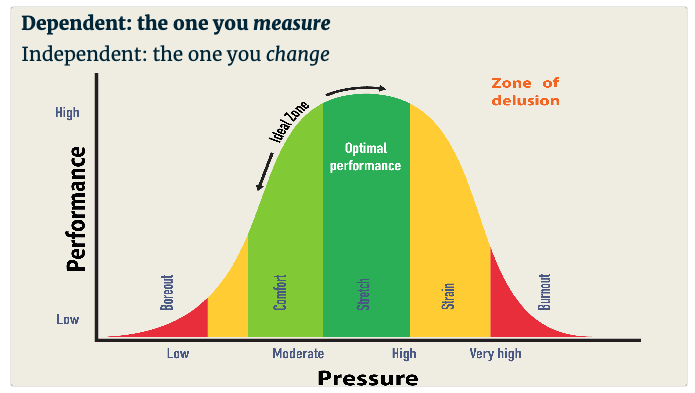The Classroom Experiment: The start of Year Two
When I was just about to start teaching last summer, I asked a friend and colleague whether they thought I would end up teaching for more than one year. They said, “well, at least one more year. Because at the end of the first year, you’ll have so many ideas of how you’ll want to do it better next time.” Of course, they were right.
So what did I do with my fresh slate?
The general flow of my first unit was:
- Setting the tone
- Identifying individual strengths
- Connecting them to strengths within a group
- Setting and solidifying expectations about how we treat each other
- Learning how to learn, through experiment design and data literacy
- Experiment design and data literacy, through those teamwork skills
The driving question was, “How can I use my strengths to deepen my learning?”
Note: This post is a little bit “first I did this, then I did that” with a few reflections sprinkled in. Whereas other posts will have a lot more editorializing and pontificating, this one is more of a summary of what I found to be the most important foundations for the year, and how I taught them. Overall, I’m very happy with this unit and would definitely do it again! It highlights everything I think is the most important, and weaves it together in a fun way.
Setting the Tone
Before diving into teaching anything, I had to make sure that I set the proper tone. One of the main things I learned last year was just … seventh grade boys are surprisingly mean to each other. It took me a while to realize how big of a problem this was last year, so this year I made it my #1 priority from day one.
First, I nipped the contagious chorus of “broooo”s right in the bud. Last year, they would actively look for anyone to mess anything up so one could start yelling “brooo” and then the whole class could pile on yelling “BROOOO”! I just told them, “in this class, we don’t say ‘bro, what are you doing?!” or “what are you doing, bro?!” and we don’t yell “broooo” in general.
We had some fun brainstorming other things that we don’t say in our class, and concluding that it was really all about the tone and potential impact that our words can have on each other, more than about the specific words.
Whereas last year I sort of treated this as ancillary to what was being taught, this year, whenever it came up, I made it a huge deal. Now, a few weeks in, I only need to give small reminders and otherwise they are pretty supportive of each other.
Identifying Strengths
As an adult, you get to find your strengths and lean into them. But in school, you’re always told what you’re bad at and made to drill that! I remember this being really disheartening. So I figured we’d start with strengths instead.
I had them take several strengths and personality quizzes. Some had technical issues and some had conceptual issues, so my note for next year is to just use the one that worked best: the Via assessment. Here is a sample result from a student:

A surprising number of them got “Love” and “Kindness” as their top strengths, which was fascinating to me, especially because I had seen how mean 7th graders could be to each other, last year. In general, this helped me to see them for their strengths as well, rather than starting off by seeing them for all the things they haven’t learned yet.
I also had a minor incident, where one of the quizzes suggested professions you might be interested in based on your personality and the amount of extra training you were willing to do. As it turned out, most kids did not read the page that explained what all the different levels of schooling were and just chose the middle option. The middle option happened to be “vocational” or “associate’s degree” so some students got professions they were not happy about. One student in particular got results that included “Coroner”, and was pretty upset once he looked up what it meant.
The lesson then became about what happens after high school. It’s incredible how little they know, based on how stressed they are about it already. They talk about getting into college all the time, but don’t know the name of the degree you earn in college! We talked about each level of training in depth, and I explained that the same personality would be suggested totally different professions, based on how much extra school they were willing to do. A learning experience for everyone, I guess.
Connecting strengths to teamwork
While only a few students said “I don’t have any strengths” to begin with, many of them had a hard time connecting their strength to how they could use that strength to help a team. They would say things like “but how could I possibly use curiosity to help a team?”
This turned out to be a very useful exercise, but needed to be extremely scaffolded. So I gave them the sentence:
“If a group is struggling with ___, I can help by ___, because I am good at ___.”
Some still struggled but it was a productive struggle. It also gave them something very concrete to reflect back on after they had an assignment that involved some teamwork!
Teaching Collaboration
I then specifically created learning experiences to challenge them to collaborate. First, I had half the class do a human knot while the other half wrote down actions and phrases they observed that helped and hurt teamwork. I then had them switch. We then discussed as a class, and did a whole-class human knot trying to put those findings into action.

In one section, the whole-class human knot actually took less time than the half-class human knots! This shocked everyone (including me, to be honest). But the kids immediately figured out how this could be: If there are more of them, then it’s more likely someone will have the idea they need! Assuming, of course, they heard everyone’s ideas.
This ended up being a perfect lead-in to my next activity. We had a brief conversation about whether teams work better when everyone’s the same, or when people are different. (Research shows it depends on whether they can listen to each other!)
I then showed them the court scene from Legally Blonde, where everyone thinks Elle is stupid but it’s her specialized knowledge about perms that ends up saving the day!
Twelve-year-old boys had no problem answering the question, “why did everyone think Elle was stupid?”: “because she’s all blonde and pink and glittery and ditzy!!!” From there it was simple to connect the dots: when you discount people who are different from you and don’t listen to their perspective, you miss out on potentially crucial information.
In one of the sections, the principal happened to come in and observe my class right at the moment I was starting the Legally Blonde clip. Luckily, he stayed for the debrief, so he could see the relevance!
Learning How to Learn
This then connected directly into the next lesson, which was on confirmation bias. I had them do this puzzle as an in-class game, where I acted as the computer. I gave them three numbers that followed the rule (2, 4, and 8 follow the rule), and they could ask me if any three numbers followed the rule. They could then guess the rule but they only get one guess. (If you haven’t done this, go play it quickly before reading on!)
Long story short, you get an idea about what the rule is, you test numbers that would fit the rule, and forget to test numbers that should break the rule. 77% of NYT readers apparently guessed a rule without ever getting a “no” answer to a three number sequence.
The students learned a lot from that experience. Some classes fell for the trick harder than others, including one class where almost every single student guessed the rule after zero three-number questions. (At first I was excited about the couple students who stayed sitting and not guessing yet, but then I realized they were just very confused about what was going on…)
When I revealed that the rule was not each number doubling, they traced their thinking and realized they jumped to a conclusion, only tested whether it was true and not whether it was false, and just went with that. We all discussed why we avoid seeking dis-confirming evidence: It feels bad to hear “no”, but of course, that’s what we learn the most from.
They then spontaneously connected confirmation bias to diversity and teamwork, and how if you write someone off and only look for reasons not to listen to them, you’ll never give them a chance to prove you wrong! This was unplanned and extremely rewarding.
Experiment Design
I continued with the theme of “sometimes learning feels challenging” to teach them about productive struggle, but also sneaking in there the beginning of experiment design…

Of course, I had to connect it to sports so that the boys would understand:

I followed this up with a different kind of graph illustrating a known thing: you have to get out of your comfort zone to grow:

While the idea was familiar, some students still felt they would grow most while most comfortable, so it was useful as a discussion, and not just as a way to introduce different graphs and axes.
To top this off, I did this mini-project: I told them the dependent variable for everyone was going to be “how fast you can stack cups” but each group could pick their own independent variable. One of the most fun ones was “positivity”, where they either cheered each other on, did nothing, or yelled mean things at each other, and saw how this affected cup stacking speed.
Hilariously, they did the worst with no yelling, and slightly better with negativity than positivity (although the sample size was of course too small to be significant). Maybe that’s why they’re so mean to each other — they’re just helping each other learn? I’m still skeptical but it was a funny finding.

I had them collect the data, helped them graph it using excel/sheets/canva, and they briefly presented their procedure and findings to the class. Finally, I had them reflect on whether they got to use their strengths to help their team in that project, what worked well, and what could have gone better.
Lastly, I put them into groups based on balancing their strengths, and had them come up with a group contract:

I pushed them to come up with consequences that were not just “we tell the teacher” and I look forward to seeing whether they can hold each other accountable. The rules they wrote were not bad!
I actually did a little bit of data visualization of the rules, and plan to go over the graph in class tomorrow.

Conclusion
It took a little while, but I feel like I have really set a solid foundation for the year. The students know a little about their own strengths, a little bit about teamwork and expectations of teamwork, a little bit about how learning works, and a little bit about experiment design. My goal is to build on all of those all year, as we dive into the content.
